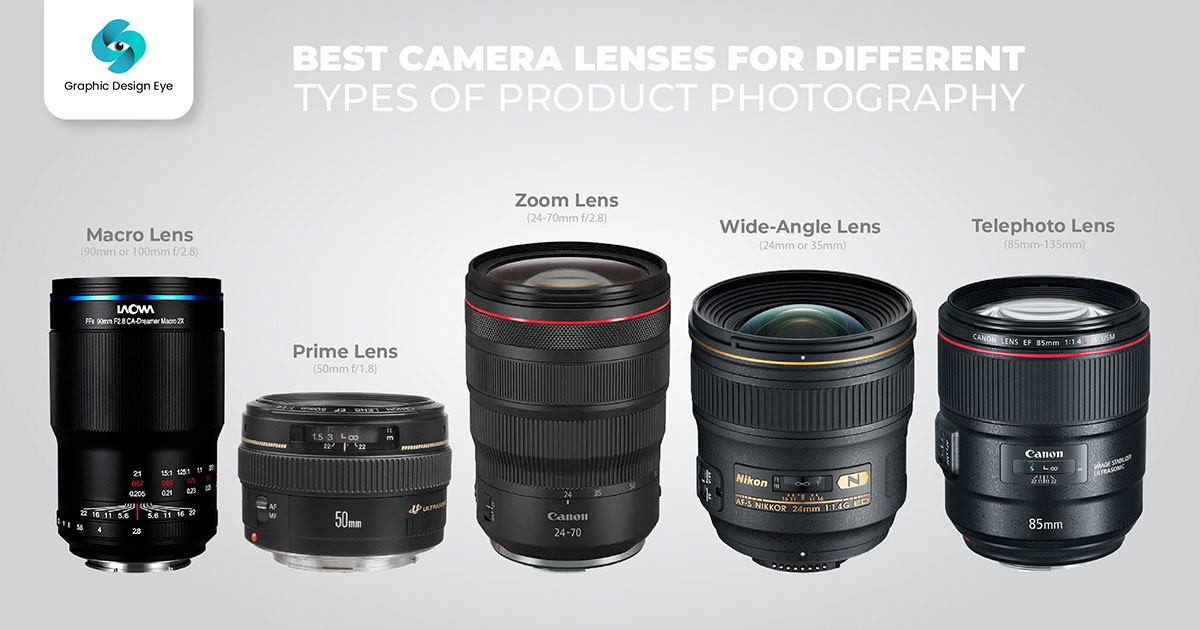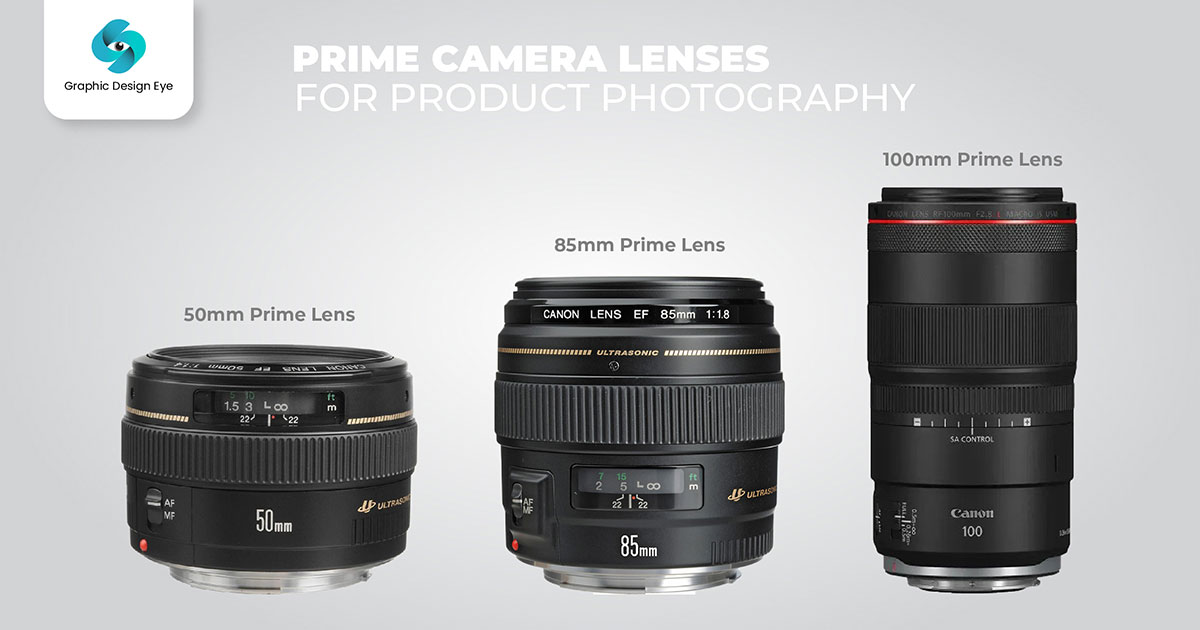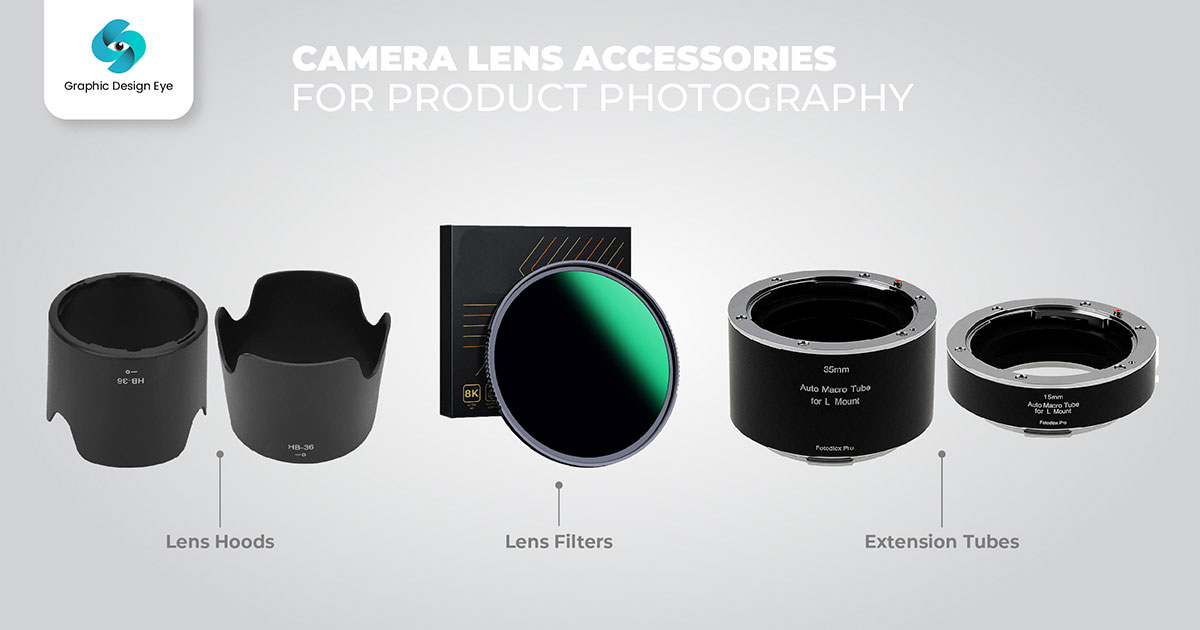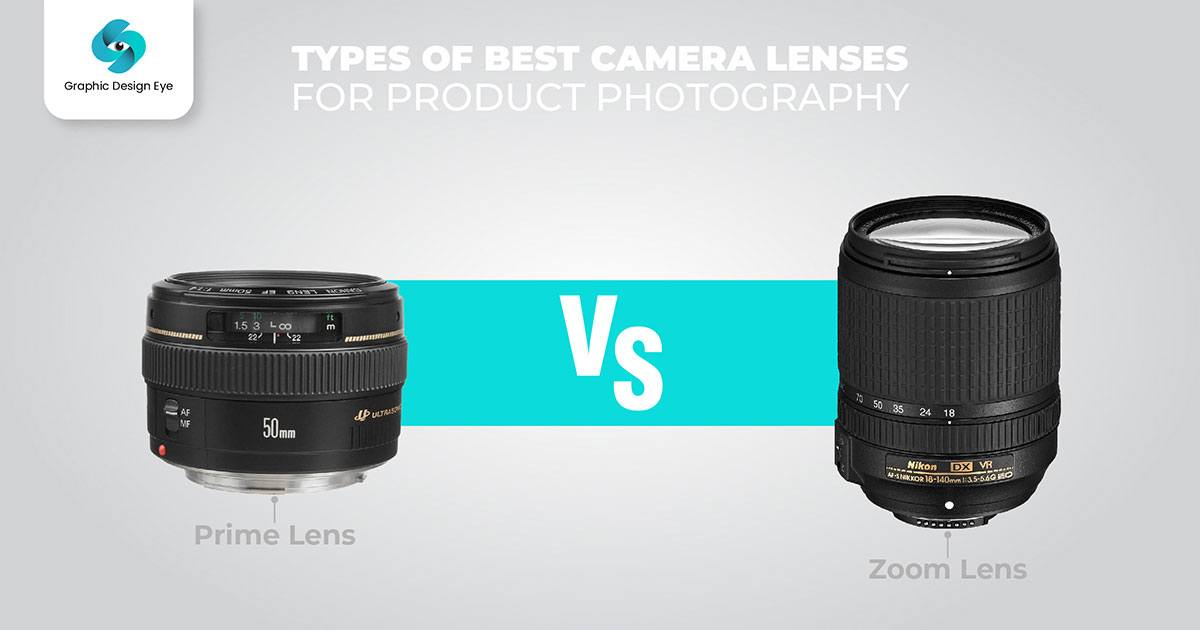In the world of photography, there is a wide variety of lenses, and different lenses serve different purposes. But the main objective is the same: to get aesthetically amazing photos.
You might’ve noticed that colorful, high-resolution, detailed photos are more pleasing to look at. Behind these photos, a lot of things happen before uploading them online. One major factor in that thing is the lenses.
Throughout this article, I will explain all about the best lenses for product photography that can help you enhance the beauty of your product's online appearance and get more attention. So buckle up, let's get started.

To capture a product's details or features in the best possible way, you must use the right lens. Any type of product, whether small or large, requires a specific lens to highlight its unique details. Small items like jewelry need macro camera lenses to capture details up close. Medium-sized items, like electronics, need lenses that offer both clarity and versatility. Larger products, such as furniture or vehicles, require wide-angle or telephoto lenses to capture them fully. In short, the right lens makes all the difference in creating clear, attractive product photos. Below is a brief explanation of the camera lenses and which to use for different purposes.
Macro lenses let you get really close to small products. They are designed to capture very small details up close, allowing you to show all the tiny details clearly, like the sparkle of a diamond or the texture of a watch.
Macro lenses provide a ratio of 1:1, meaning the product will appear life-sized in the photo. This makes them perfect for small items where detail matters. Macro lenses offer high sharpness to catch fine details clearly, reducing distortion when you get very close to the product. Thus, you get a true representation of the product.
A 50mm prime lens gives you a natural view similar to how the human eye sees the product. It is great for taking photos of gadgets like phones or small appliances, keeping them looking true to reality.
The fixed focal length allows precise composition, and the large aperture (f/1.8) creates a soft, blurry background (bokeh) that makes the product stand out clearly. It also captures details well while keeping the product looking realistic.
A 24-70mm zoom lens offers flexibility in framing. You can adjust how much of the scene you want to capture by zooming in and out, allowing for close-up detail shots or wider context shots without switching lenses. This is especially helpful when working with different-sized products.
This lens is very versatile, meaning you can use it for both close shots and wider shots. The ability to zoom in and out saves time and provides a variety of views. It’s also helpful for photographing products of different sizes without changing the lens.
You can use a wide-angle lens to capture larger items such as furniture or cars. It’s helpful when working in a tight space, allowing you to get the whole product in the frame even when you can't move far back.
A wide-angle lens captures a broad field of view, giving you the option to show large products in their setting, such as a sofa in a living room. However, be careful, as it can make edges look slightly curved, which can be corrected when editing the photo.
Telephoto lenses focus on the product while keeping the background simple. They compress the scene and reduce background distractions, allowing larger products to stand out without interference. This is why they are a valuable choice for larger products. A telephoto lens provides a focused look with less distortion compared to wide-angle lenses, making the product appear sharp. It is particularly useful for capturing lifestyle shots, like a car parked with a scenic background, which adds special attention to the product.

The 50mm lens is called a "standard" lens because its focal length closely matches what the human eye naturally sees. It's versatile and works well for various types of ecommerce photography.
The 85mm prime lens is known for creating amazing background blur. This feature is ideal when you want to separate a product from its background or surroundings, ensuring all the focus is on the main product. Therefore, it is particularly suitable for product photography.
The 85mm lens provides better isolation for products compared to the 50mm, but it is not very suitable for macro shots where capturing fine details of very small objects is required.
The 100mm prime lens is especially suited for macro photography and is often a photographer's first choice for close-up product photography. It is designed to capture small items in great detail.
Each of these lenses has a unique purpose in product photography: the 50mm for versatility, the 85mm for isolating subjects, and the 100mm for capturing fine details in macro shots. The best choice depends on the product, desired style, and level of detail you want.

Lens accessories can greatly enhance your product photography by controlling light and adding creative effects. Here are some lens accessories for product photography that are useful and beneficial:
A lens filter is a transparent or semi-transparent glass attached to the front of the camera lens. It comes with various uses. It protects the lens and can enhance the image in specific ways. Here are my two most used methods:
Polarizing Filters (Polarizers)
UV Filters
Lens hoods are cylindrical or petal-shaped materials that can be attached to the front of the lens. They are often overlooked, but when used correctly, they can greatly enhance image quality.

Different camera lenses have different uses. Here, I will share my overview of the types of lenses that are mostly used for product photography.
All of us who are into photography know what a prime lens is. It is a basic lens that can capture nice photos. These lenses are known for their good-quality images with minimal distortion. Prime lenses usually deliver sharp, crisp photos.
| Pros | Cons |
|---|---|
| ✅ Prime lenses normally have a larger aperture (like f/1.8 or f/1.4), which allows for beautiful background blur (bokeh) that helps the product stand out. | ❌ The fixed focal length means you can't zoom in or out, so you need to move the camera or product for adjustment. |
| ✅ They are lightweight, making them easy to handle for long shoots. | ❌ You may need multiple prime lenses for different kinds of shots. |
Zoom lenses are versatile because they cover different focal lengths, making it easy to switch between close-ups and wider shots without changing lenses.
| Pros | Cons |
|---|---|
| ✅ They allow you to quickly adjust the composition without moving your setup. | ❌ They are normally heavier and bulkier compared to prime lenses. |
| ✅ You can switch between different focal lengths much more quickly. | ❌ The image quality might not be as sharp as that of a prime lens, especially at the extreme ends of the zoom range. |
Wide-angle lenses are best for capturing larger products like furniture. You should also use them when you need to include some context in your photo, such as showing other items that complement the product.
Wide-angle lenses are meant to capture more of the product and its environment, making them ideal for lifestyle photos because other photography elements in the photo enhance the main product. However, this lens can cause some distortion, especially if you’re taking close shots. For example, items can look stretched if they are too close to the lens.
Standard lenses are typically those around 50mm. They provide a perspective that is similar to what the human eye sees. Standard camera lenses are flexible, allowing you to shoot different types of products with a natural and familiar viewpoint.
Items like food, cosmetics, and general retail products get the best look with this type of lens. These camera enses are perfect for capturing products that don’t require extreme close-up or zoom shots, creating a balanced, straightforward perspective.
Telephoto lenses usually range from 85mm to 200mm. They are considered ideal for capturing fine details of a product, especially for smaller items like jewelry or watches.
Telephoto lenses help highlight the product effectively by creating a compressed effect, which makes the product appear focused and sharp. They are at their best when you want to highlight the textures of a product, such as the shine of a gemstone or the grain in a piece of wood, without distortion.
Finally! Choosing the best lenses for product photography. You already know why: each lens serves a specific purpose. The size and details of the product determine which lens you should use to capture it perfectly.
For example, if you want full focus on the product, go for prime lenses because they produce sharp images with a pleasing background blur, keeping the attention solely on the product. If you want the main product along with another product or scenario included, you should opt for a wide-angle lens.
Remember, the lens you use directly impacts the quality, sharpness, and focus of your images. Each lens has its own special feature to help your photos look their best. This variation will make all the difference in presenting products attractively online. This means you should select a lens based on your needs and the type of photo you want to achieve.
That’s all I’ve got for today. As you have seen, I’ve shared a basic overview of the best camera lenses and what they’re best used for in product photography. I hope this was helpful for you.
Still, if you have any further questions, feel free to contact us. My team and I will do our best to help you find the best lenses for product photography. Happy photography!